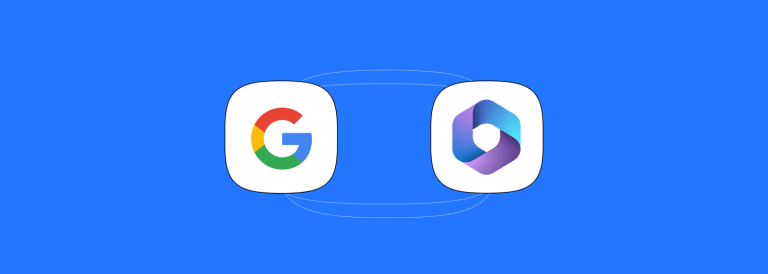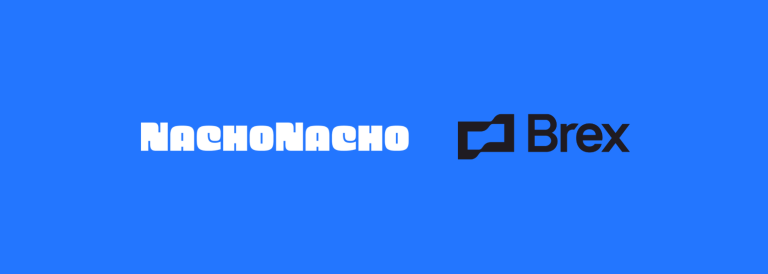ClickUp vs Jira Comparison: Pricing, Features, Discounts
As your business scales, you realize that a project management tool is a must. ClickUp and Jira are 2 of the most common choices, but which one is the right one for you?
Jira is ideal for software development, IT, and agile teams. It’s built for structured workflows, issue tracking, and methodologies like Scrum and Kanban.
ClickUp is a versatile project management tool for any team, including marketing, sales, HR, and development. It consolidates many tools into a single platform, offering flexibility for various processes.
Continue reading to learn more about both of these tools.
Table of contents
ClickUp vs. Jira key differences summary table
| Metric | ClickUp | Jira |
|---|---|---|
| Best For | All-in-one productivity for diverse teams (Marketing, HR, etc.) | Agile software development and IT teams |
| Core Strength | Extreme flexibility, customization, and consolidating tools | Robust issue tracking and agile workflows |
| Ease of Use | A learning curve due to high customization | Structured and intuitive for developers, can be complex for others |
| Pricing | Generous free plan, generally more affordable paid plans | Free plan for up to 10 users, can scale up in cost |
| Integrations | Robust, over 1,000 integrations with business tools | Massive, over 3,000 integrations via the Atlassian Marketplace |
ClickUp vs. Jira pricing
You most likely already have an idea of the main value propositions of ClickUp and Jira, so let’s start by comparind how they can affect your pocket.
This pricin breakdown will help you get an idea which tool might be the best one as you scale. But before we get into the details, remember that with NachoNacho (your first stop for software savings) you can save on both of these powerful tools! Simply by subscribing to them through NachoNacho:
- Get 20% off ClickUp with NachoNacho.
- Get 12 months free on Jira and Atlassian with NachoNacho.
ClickUp pricing
ClickUp offers several tiers, from a free plan up to an Enterprise option. Prices depend on whether you pay monthly or yearly (yearly usually gives a discount).
Here are the main plans:
| Free Forever | ~$0 | Basic project/task management, unlimited tasks, calendar/board views, docs, Whiteboards, but limited storage (60 MB), limited advanced features (“uses” limits), basic support. |
| Unlimited | ~$10 / user-month billed monthly; about $7/user/month if paid annually. | Everything in Free + unlimited storage, Gantt charts, dashboards, more integrations, more “uses” of certain features, guest permissions, etc. Suitable for small teams needing more flexibility. |
| Business | About $19/user/month billed monthly; ~$12/user/month if yearly. | Adds more advanced features: unlimited dashboards/whiteboards/views, workload / timeline views, more automations, better reporting, more guest seats, enhanced permissions/security, SSO options, etc. Geared towards mid-sized teams. |
| Enterprise | Custom pricing (you contact ClickUp) | All Business plan features plus premium/enterprise-grade tools: white labeling, advanced permissions, custom roles, enterprise API, data residency options, higher levels of support (onboarding, success manager), more control over security/compliance. |
Jira pricing
Here are the main cloud-plans (Software / general Jira usage) and what they provide. Prices often vary with number of users, billing cycle (monthly vs annual), region, etc.
| Free | $0, up to ~10 users. | Basic boards (Kanban, Scrum), backlog, agile reporting, simple workflows, etc. Limited storage (2 GB), community support, fewer admin/security controls. Good for small teams starting out. |
| Standard | ~$7-$9 / user/month (depending on user count, whether annual payment, etc.). | Everything in Free + more storage (e.g. 250GB), better permissions / roles, more control (e.g. administrative features, data residency, audit logs), higher limits for automation, etc. |
| Premium | ~$14-$17 / user/month (again depends on many factors) in many cases. | Adds features for scaling: global & multi-project automation, advanced roadmaps/planning, sandbox environments, higher-uptime SLA, premium support, unlimited storage, etc. |
| Enterprise | Custom pricing; you need to contact Atlassian. | All Premium features + enterprise governance, compliance, security, cross-product analytics, data-residency & control at scale, dedicated support, usually better SLAs. |
Jira offers other solutions that have their own pricing like Jira Service Management and Jira Data Center.
ClickUp vs. Jira: Who are they best for?
Before we dive into the features, it’s crucial to understand who each tool was designed for.
Key takeaways:
– Jira is for best for software, IT, and agile development teams.
– ClickUp is best for general project management for every team in any organization.
Jira’s ideal customer
Jira was created by Atlassian specifically for software development, IT, and agile teams.
Its strength is in its structured, rigorous workflows and deep-rooted focus on methodologies like Scrum and Kanban. All of these are key for development teams and technical products and closely align with the principles covered in a CSM certification.
So, if your team lives and breathes code, issue tracking, and sprint planning, Jira is perfectly aligned with your needs.
ClickUp’s ideal customer
ClickUp on the other hand takes a broader approach for project management where you can manage most projects throught its interface and tools.
ClickUp is positioned as a versatile solution for every team within an organization. Whether you’re in marketing, sales, HR, or development, ClickUp offers the flexibility to adapt to your specific processes. It is basically a combination of many other tools in one for the purpose of project and task management.
For example, ClickUp’s functionalities can replace Slack, Notion, Miro, Airtable, etc.
With that in mind, its core strength is consolidating all of these tools into a single, unified platform.
What are the main features of ClickUp vs. Jira?
Both tools offer a robust set of features, but they approach them from different perspectives.
Task Management & Views
If you’ve ever used a task management platform, you may be used to a certain view or workflow. So to minimize adoption time and learning curve, it’s better to know if your preferred management views are available in one of these tools.
Key takeaways:
– ClickUp: 15+ views (List, Board, Gantt, etc.).
– ClickUp: Nested tasks/sub-tasks for hierarchy.
– Jira: Focus on Scrum & Kanban boards.
– Jira: Issue-based tracking with workflows.
ClickUp
Starting with ClickUp, this is where the platform’s flexibility shines.
It offers over 15 customizable views, including List, Board, Calendar, Gantt, and even mind maps. This variety allows each team member to work in a way that suits their style.
ClickUp also excels at creating nested tasks and sub-tasks, giving you granular control over project hierarchies.
Jira
Jira’s focuses more on agile views, primarily the Scrum and Kanban boards, which are more common for dev team.
These are meticulously designed for issue-based tracking, where each “ticket” or “issue” is a detailed piece of work with a specific workflow (e.g., To Do, In Progress, Done).
While it has other views, Jira is purpose-built for a developer-centric workflow.
Reporting & Analytics
Reporting is very important aspect of project management. It will help you identify bottlenecks in your business operations. Let’s compare the reporting and analytics capabilities of both of these tools below.
Key takeaways:
– ClickUp: Custom dashboards & widgets for progress, capacity, and workload.
– ClickUp: Great for high-level overviews, but limited for dev-specific metrics.
– Jira: Built-in agile reports (Burndown, Velocity, Epic).
– Jira: Best for sprint & dev team performance insights.
ClickUp
ClickUp offers highly customizable dashboards and a wide range of reporting widgets.
You can visualize progress, track capacity, and monitor workload across your team, making it a great option for a high-level overview of different projects and departments.
So you can expect the most important reporting necessities to be met with ClickUp, but it will lack some information that is helpful for dev teams.
Jira
Provides robust, out-of-the-box agile reports that are essential for software development.
Its Burndown Charts, Velocity Charts, and Epic Reports are the industry standard for gaining deep insights into sprint performance and development metrics.
If you need to analyze developer productivity, Jira is definitely the go-to tool between these 2.
Automation
Which of these tools offers better automation? Let’s take a closer look.
Key takeaways:
– ClickUp: User-friendly “if/then” automations, flexible for any team.
– Jira: Developer-focused automations integrated with code workflows.
ClickUp
ClickUp features an intuitive automation builder that in simple term uses an “if this happens, then do that” logic.
This makes it easy for anyone on the team to set up rules to automate repetitive tasks, with options for complex, multi-step automations.
Jira
This platforms’s automations are powerful and highly focused on streamlining developer workflows.
For example, you can set a rule to automatically update a ticket’s status when a code commit is made or a pull request is merged. These automations are designed to integrate seamlessly with the development lifecycle.
Integrations
Projects often require connectivity between many tools and data sources. So it’s ery helpful to have simple integrations with the tools you already use. Here’s a breakdown of the most popular integrations on these project management platforms.
Jira integrations
As a long-standing industry leader, Jira has a massive ecosystem of over 3,000 integrations via the Atlassian Marketplace.
It’s the standard for connecting with a wide range of development and IT tools, from GitHub and Bitbucket to Jenkins and Slack.
- Slack
- Microsoft Teams
- GitHub
- GitLab
- Bitbucket
- Confluence
- Trello
- Google Drive
- Dropbox
- Zoom
ClickUp integrations
While not as extensive as Jira’s, ClickUp has a robust number of integrations (over 1,000).
It focuses on popular business tools like Google Workspace, HubSpot, and Salesforce, making it a strong contender for non-developer teams.
- Slack
- Microsoft Teams
- Google Drive
- Dropbox
- OneDrive
- Zoom
- GitHub
- GitLab
- Bitbucket
- Zapier
The veredict
Choosing between ClickUp and Jira ultimately depends on your team’s specific needs and workflow.
Choose Jira if…
- Your team is primarily focused on software development or IT.
- You strictly adhere to agile methodologies like Scrum or Kanban.
- You need robust issue tracking and deep integrations with other developer tools.
Choose ClickUp if…
- You need a single, all-in-one tool for a variety of teams (e.g., developers and marketers).
- You value extreme flexibility and customization to adapt to any workflow.
- You are a small team looking for a generous free plan to get started.
Once you make a decision, make sure you don’t spend more than you have to by taking advatange of NachoNacho’s exclusive discounts on these products! Check these and hundreds more SaaS & AI product on the NachoNacho marketplace.
Let us know if you have any questions about the redemption process!

Written by Andres Muñoz
If you would like to receive the latest deals added to NachoNacho, make sure you sign up for our newsletter below. We’re adding amazing software discounts you can’t miss!
Sign up for our newsletter







